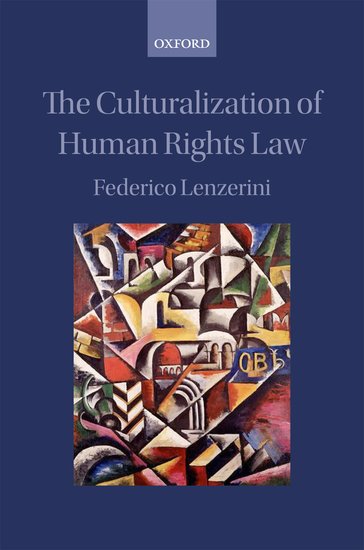By Federico Lenzerini
When, in 1935, the Permanent Court of International Justice was requested by the Council of the League of Nations to provide an advisory opinion on the Minority Schools in Albania, it emphasized that “the application of the same regime to a majority as to a minority, whose needs are quite different, would only create an apparent equality.” The Court also added that the rationale of the protection of minorities is to allow them to “preserving the characteristics which distinguish them from the majority, and satisfying the ensuing special needs” (ibid., at 48). The well-known Aristotelian formula — according to which equality consists in treating like cases alike and unlike cases differently — implies that the metaphysical “idea of equality of men as persons and equal treatment” should be handled in a flexible manner, to allow “different treatment of persons [when it is justified by] the consideration of the differences of factual circumstances such as sex, age, language, religion, economic condition, education, etc.”

If one were asked to choose one word to embrace all factual — but also spiritual, intellectual and emotional — circumstances (rectius: “elements”) determining the existence of differences among individuals and communities, this word would certainly be culture, intended as “the whole complex of distinctive spiritual, material, intellectual and emotional features that characterize a society or social group [including] not only the arts and letters, but also modes of life, the fundamental rights of the human being, value systems, traditions and beliefs” (1982 UNESCO Mexico City Declaration on Cultural Policies).
Culture is indeed the element determining the uniqueness, identity, and distinctiveness of each human being (as an individual) and community (as a collectivity). Ultimately, the cultural specificity of each person or community determines their life aspirations, expectations, and choices. Since human rights are one of the main “tools” available to human beings to pursue their life expectations and dreams, their strict interconnection with culture is beyond question. Therefore, conceiving human rights in terms of a monolithic system of inflexible rules destined to be applied according to pre-determined and standardized criteria wouldn’t help much in ensuring their effectiveness in pursuing the well-being and happiness of human beings.
On the contrary, the correct approach to international human rights law–in terms of understanding, interpretation, adjudication and redress for breaches–should be centered on the idea of multiculturalism, so as that in each concrete case the specific needs of the people specifically concerned should be taken into primary account. In the most recent decades such an approach has actually been adopted in the context of relevant international practice, which, through promoting the process of culturalization of human rights law, is making human rights standards much more responsive to the real needs of human beings and, a fortiori, much more effective.
The specific situation of indigenous peoples–who, due to their cultural specificity and vision of life, actually need a differentiated treatment in the context of human rights adjudication and enforcement–offers a very clear idea of how such a process works. Human rights monitoring bodies have developed a marked sensibility for their needs, carving in stone a noticeably evolutionary piece of culturally-responsive jurisprudence. In particular, they have “adapted” human rights standards of individual character to the collectively-driven understanding of life and social relationships of indigenous peoples. In this respect, for example, the Human Rights Committee has affirmed that, although the rights of the members of ethnic, religious, or linguistic minorities to enjoy their own culture, to profess and practice their own religion, or to use their own language, contemplated by Article 27 of the International Covenant on Civil and Political Rights, “are individual rights, they depend in turn on the ability of the minority group to maintain its culture, language, or religion. Accordingly, positive measures by States may also be necessary to protect the identity of a minority” (General comment No. 23(50) (art. 27)).
To a similar extent, most monitoring bodies have extended the scope of human rights treaty provisions defending the individual right to property to cover the collective property of ancestral lands by indigenous peoples. A similar hermeneutic approach has been followed with respect to the interpretation of other human rights standards, through adapting them to the cultural needs and views of indigenous communities. This happens, for instance, with respect to the right to humane treatment, which includes the right of every person to have their physical, mental, and moral integrity respected and, consequently, the prohibition of torture or cruel, inhuman, or degrading treatment or punishment. So, for example, the Inter-American Court of Human Rights has equated a community that is denied the possibility of burying its dead according to its own traditions to inhuman treatment. This is because such a situation is perceived by the community members–in light of their own culture–as a severe offence, leading “to a number of ‘spiritually-caused illnesses’ that become manifest as actual physical maladies and can potentially affect the entire natural lineage” of the community itself (e.g. Case of Moiwana Community v. Suriname). This practice is certainly to be welcomed, and its extension to the specific needs of all diverse cultural groups inhabiting the world promises to represent a huge step forward towards maximizing the effectiveness of human rights standards in the life of people.
Federico Lenzerini is Professor of International Law and European Union Law at the University of Siena (Italy). He is also Professor at the LLM programme in Intercultural Human Rights of the St. Thomas University School of Law, Miami (FL), USA. He is the author of the book The Culturalization of Human Rights Law, published by Oxford University Press in 2014. Federico Lenzerini can be found on LinkedIn.
Subscribe to the OUPblog via email or RSS.
Subscribe to only law articles on the OUPblog via email or RSS.


Recent Comments
There are currently no comments.